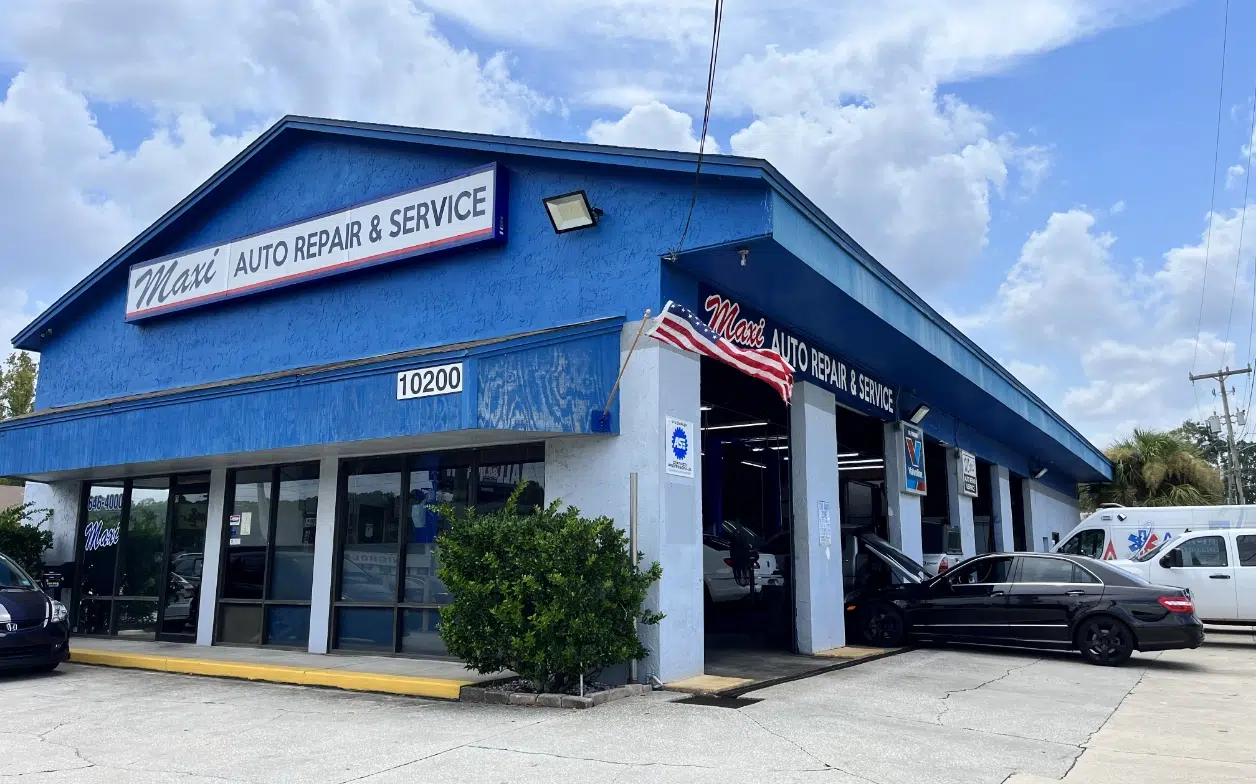The check engine light in your car will come on if the electronic control module (ECM) receives a bad signal that it can’t compensate for. When the light comes on, the vehicle may seem to run normally, or it may run poorly. If the vehicle runs normally, bring it to Maxi Auto Repair and Service in Jacksonville FL, for vehicle diagnostics as soon as possible. If the vehicle is running poorly, bring it in immediately. If you are far from the shop, it’s better to tow it in; otherwise, you can drive in if you are close.
Why the Check Engine Light Comes On
Vehicles have one or more computers that manage emissions and other systems on the vehicle. The computer relies on sensors to tell it what is going on. One type of sensor converts your requests, such as stepping on the accelerator, to signals the computer uses to demand a particular action. For example, stepping on the accelerator tells the computer to increase the amount of fuel and air that goes into the intake manifold.
Other sensors sense the engine’s environment and make adjustments accordingly. For example, the coolant temperature sensor senses the engine temperature. If it’s too hot, the computer turns the engine cooling fan on.
When one of these sensors sends a value that is not within its normal parameters, the computer attempts to make adjustments. If the values are still out of range, the computer stores a code and turns the check engine light on.
Depending on what the problem is, your vehicle may run poorly or not. A certified auto technician at Maxi Auto Repair and Service can perform vehicle diagnostics on the vehicle to pull the code(s) and determine the problem.
Vehicle Sensors and What They Do
All vehicles use sensors unless they are older than the mid-1970s. Even then, vehicles had one or three sensors. As vehicle technology improved over the years, manufacturers added more sensors to help with emissions and other systems.
Common automobile sensors include:
- Air Flow Sensor: Measures the volume and density of the air entering the intake manifold so that the computer can provide the proper amount of fuel through the injectors. Most vehicles run on a mixture of 14 parts air to 1 part fuel. If the sensor fails, the vehicle may not run. If it does, it will use more fuel and will usually cause black smoke to pour from the exhaust.
- Engine Knock Sensor: If the air and fuel mixture do not ignite properly, it could cause a knocking in the engine. This sensor monitors the mixture and engine knock. A knock is when the air and fuel mixture ignites before the spark plugs can spark to ignite the fuel. If ignored, the engine knock can damage other components in the engine.
- Engine Speed Sensor: Sometimes referred to as the crankshaft sensor, the engine speed sensor measures the position and speed (RPM) of the crankshaft. The computer uses this information to determine when to dump air and fuel into each cylinder. If the timing is incorrect, the engine is no longer efficient.
- Camshaft Position Sensor: This sensor monitors the position of the camshaft for engine timing. If the timing is incorrect, the engine will lose power. In some cases, it could damage the affected cylinder.
- Manifold Absolute Pressure (MAP) Sensor: Measure the difference in pressure between the manifold and outside air pressure. If the sensor fails, the engine will use more fuel than it should, causing it to run rich and emit excess fuel from the exhaust.
- Throttle Position Sensor: Monitors the position of the throttle as you step on and off the accelerator. If this sensor malfunctions, you may get too much fuel or not enough.
- Voltage Sensor / Idle Air Sensor: Manages the vehicle’s idling speed. It ensures the vehicle idles properly and doesn’t stall, especially when the air compressor comes on, or you brake to stop or slow for a turn.
- Oxygen Sensor: Measures the amount of unburned gas in the exhaust.
- NOx Sensor: Measures the amount of Oxides of Nitrogen in the exhaust.
- Temperature Sensor: Measures the engine’s temperature.
- Fuel Temperature Sensor: Monitors the temperature of the fuel as it enters the engine.
- Speed Sensor: Measures the speed of the wheels.
Contact Maxi Auto Repair and Service
If your vehicle’s check engine light comes on, contact Hodges Maxi Auto Repair and Service for an appointment at +1-904-992-6868. We are conveniently located at 13700 Fario Road, Jacksonville, FL, 32224.






